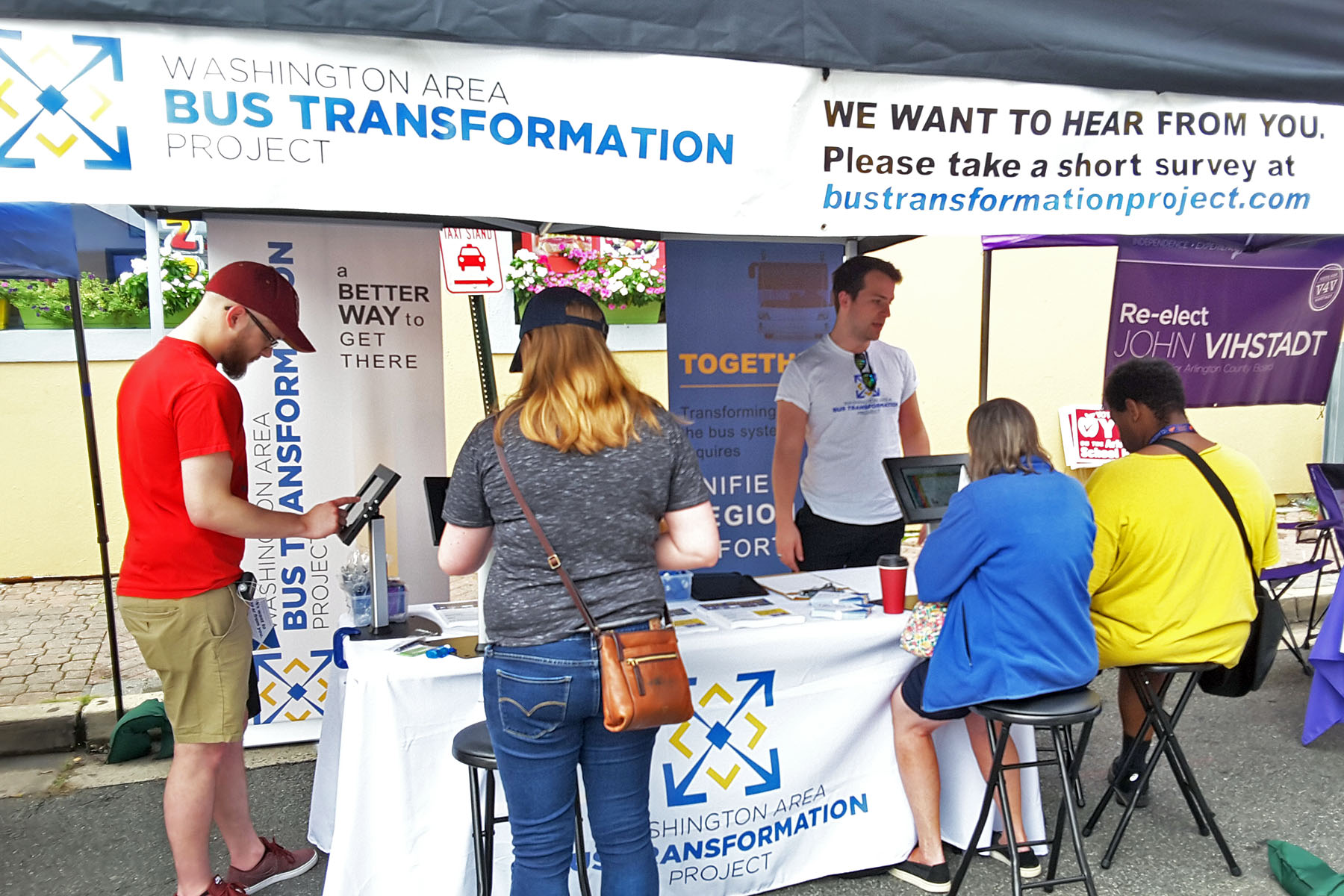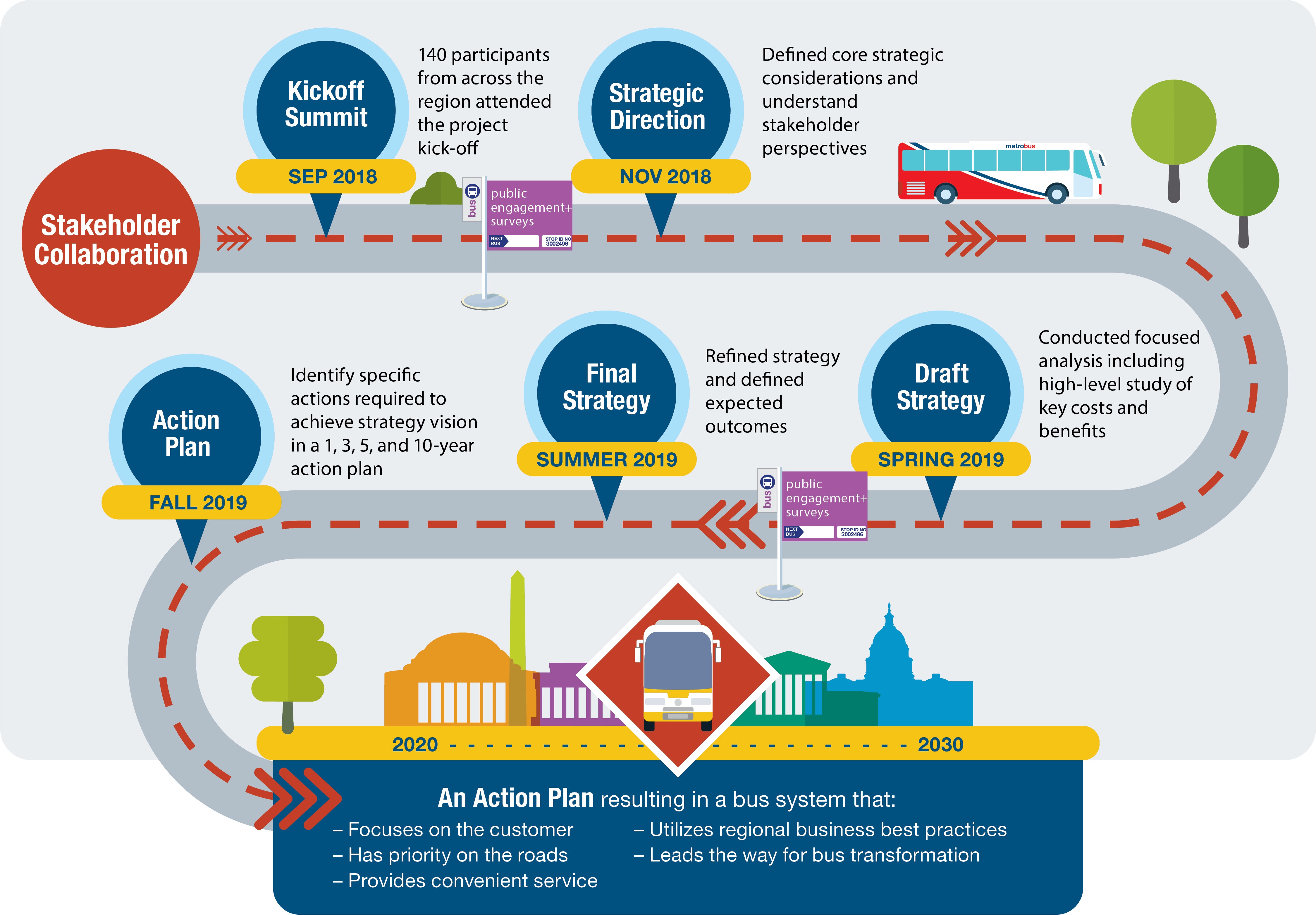The Bus Transformation Strategy, created in partnership with stakeholders and the public from across the region, is a plan to transform the bus system in the National Capital Region. The Action Plan highlights the activities required to achieve the changes envisioned for the region’s bus system demanded by stakeholders and the public over the next decade. Transformation of bus in our region calls for a new approach to bus – one that:
- Facilitates fast, frequent, desirable, affordable, and seamless travel connections for customers;
- Aligns the high-frequency and high-capacity regional bus network with roadways where buses are given priority;
- Clearly delineates and effectively coordinates regionally provided services and locally managed bus systems; and
- Empowers organizations to coordinate functions, leverage transformative technologies, and transparently track progress.
Whereas the Bus Transformation Strategy document embodies the “what” for transforming bus, the Action Plan details the “how.” These actions focus on achieving results that benefit bus riders and the whole region by providing frequent and reliable bus service on a consistent basis across the region, with improved speed and efficiency for riders.
Learn more and see who we’ve spoke to throughout the development of the Bus Transformation Strategy!
Read the Summary of the Bus Transformation Strategy
Read the full Bus Transformation Strategy
Read the Summary of the Bus Transformation Action Plan
Read the full Bus Transformation Action Plan
See who we've spoken to and where we've been
Learn more about the work that led to this Strategy by reading the background documents

Prosperity in Peril
The National Capital Region is adding 40,000–60,000 jobs and households each year, but its transportation system is struggling to keep pace, leading to some of the longest commutes and worst traffic congestion in the nation.
There is a better way to get there.
Other regions nationally and globally have transformed their bus systems to solve congestion, promote inclusive mobility, generate ridership gains, and operate efficiently. It is past time for this region to do the same, as the alternative is not only unaffordable, but also harms regional competitiveness and livability.
Without transforming the bus system, the region’s economy, competitiveness and livability are at risk.
A better way to get there
The solutions for creating a sustainable future for surface transportation are owned equally by not only bus systems but also the cities, counties, and states that own the roads. This Strategy calls on these actors to work together to create a region where:
Bus will be the mode of choice on the region’s roads by 2030, serving as the backbone of a strong and inclusive regional mobility system that will support a growing and sustainable economy.
By transforming the bus system, the most space and cost-efficient means to move large numbers of people, this Strategy leads to:
- The ability to serve more customers at lower cost
- Shorter waits and faster trips for customers, giving them the speed and convenience they deserve
- More trips on the bus network and fewer trips contributing to congestion
- Inclusive mobility and access to opportunity for our region’s most vulnerable populations
- Intuitive information, maps, and fares that are easy to understand for visitors and locals alike
Goals
The bus network of tomorrow can achieve performance outcomes and transportation objectives that will make the region more competitive, sustainable, equitable, and livable.
The goals, developed by an inclusive group of participants, are meant to guide bus transformation:
- Regional connectivity: Provide reliable on-street transit options that efficiently connect people to places and improve mobility
- Rider experience: Ensure a convenient, easy-to-use, user-centered travel choice
- Financial stewardship: Maintain a transit mode that is financially sustainable in the long-term
- Sustainable Economic Health and Access to Opportunity: Encourage vibrant, economically thriving and sustainable communities
- Equity: Create a bus system that is affordable and equitable
Strategy and Recommendations
Next Steps

